Celestron Radial Guider and Brightstar Advanced Off Axis Guider
Off Axis Guider, OAG in short are handy devices for telescope guiding. Small prism gathers some light from the telescope outside the field of view of the imaging camera and directs it on to the guide camera sensor. This allows accurate guiding as depending on scope design it can also correct for mirror flop in SCTs or some bending of OTA or the focuser in other scopes. External guide scope can't correct for that as he doesn't see that error. OAG is also lighter than a guide scope.
Celestron Radial Guider
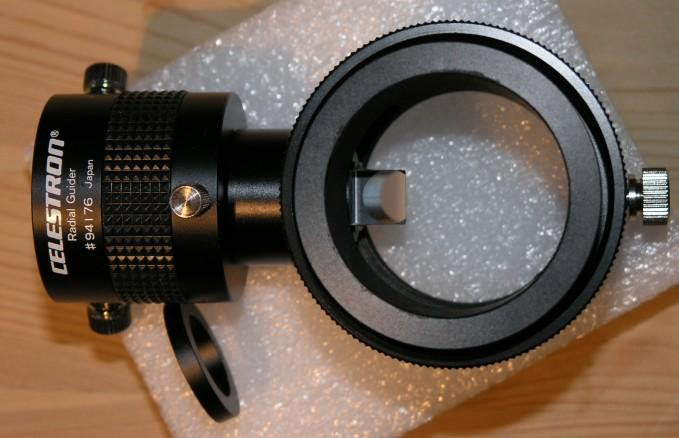
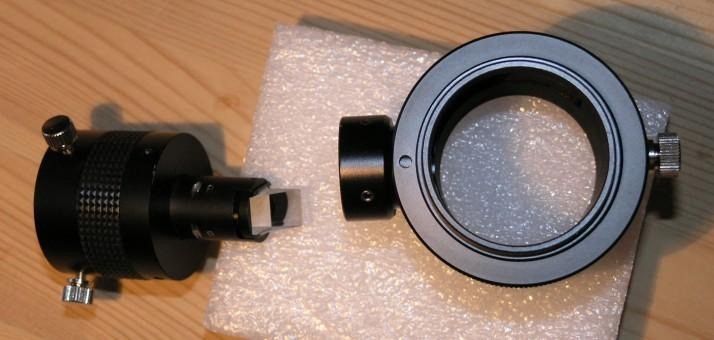
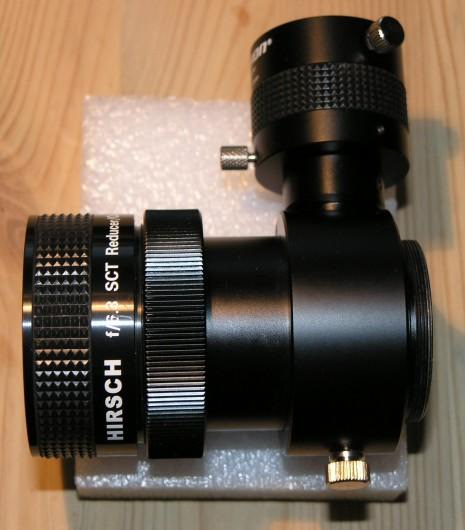
Celestron Radial Guider is quite common - as it gets modified by Baader (RCC OAG), or by Teleskop Service. Those companies modify the threads and width of the OAG base.
Radial Guider sold by Celestron has a SCT thread on the telescope side so it can be attached to a SCT or SCT threaded f/6.3 reducer/corrector. On the camera side it has a T thread. The guide head has a 1,25" nosepiece holder.
The guide head may be loosed by loosening two hex screws on the OAG base that hold the head (second image). You will find a pad / ring on the guide head. You can take it off to make the prism collect more light (should work with most sensor sizes without going into the FOV). On the third image you can see the Radial Guider mounted to the standard SCT reducer/corrector.
I used this OAG a bit. It has nice range of rotation around its axis, and without the pad the guide camera gets good amount of light. Sometimes it's available at low prices in some shops. Sometimes the long base or the 1,25" nosepiece holder for the guide cam (instead of a T thread) may not be best for given setup.
Radial guider may be adapted for other catadioptric scopes or even refractors that have enough backfocus. Sometimes you can see a refractors using SCT reducer and plausibly with this OAG. Baader makes a 2" nosepiece with a SCT thread to thread into the reducer or with plastic rings - into the OAG.
Baader RCC version is shorter and has T threads on both sides. TS versions are various and even can have T thread on the guide head.
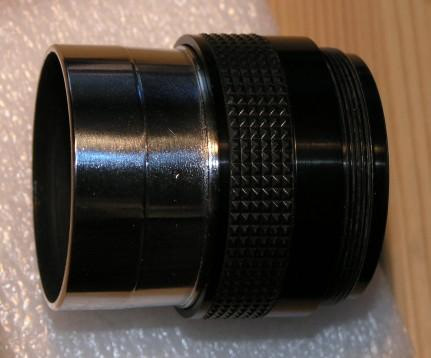
BrightStar Advanced Off Axis Guider / Orion Deluxe Off Axis Guider
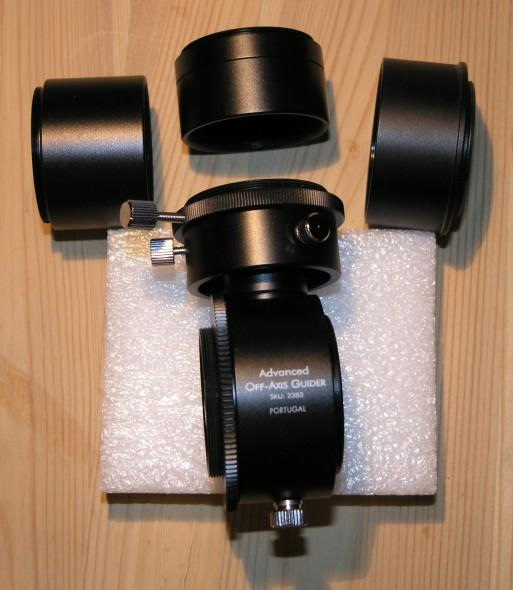
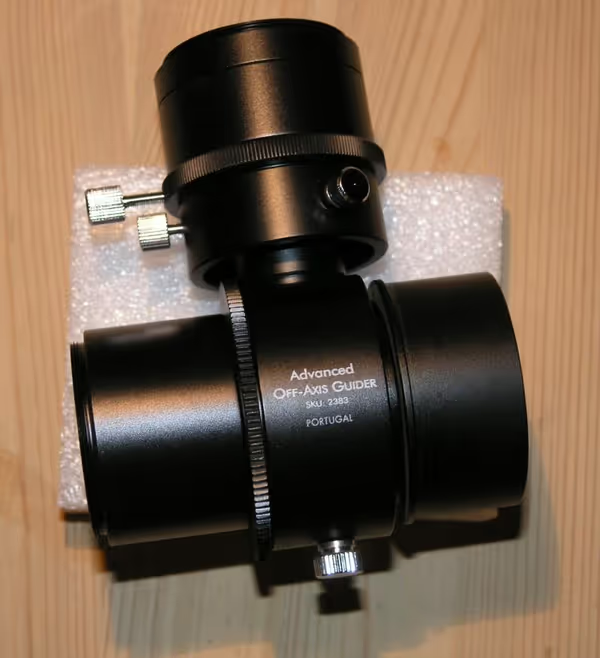
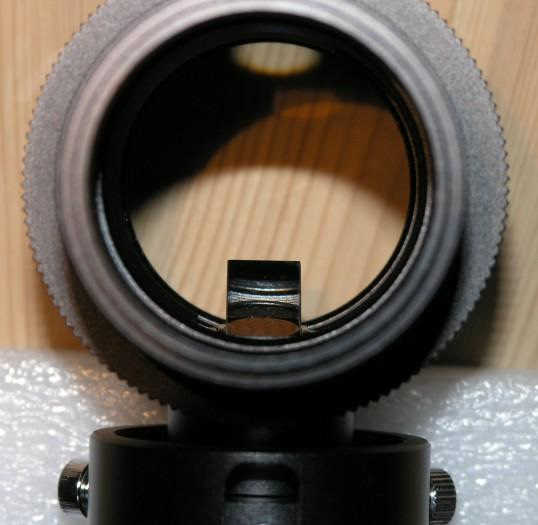
Brightstar (BS Astro) OAG for most may be known more as the Orion Off Axis Guider, as this company makes those OAGs also for Orion (product page). This OAG is sold with few T-threaded extenders, T-threaded 2" nosepiece adapter and even T-threaded short extender with locking screw (to lock a guide cam in given position). The camera side also has a locking ring so you can thread a camera or filter wheel and lock that in any position you want.
Compared to Radial guider it may have a little less rotation range (but I didn't compare that yet). The prism is attached slightly higher than in the Radial guider without the pad. The OAG did work for me, but with SCT and the reducer it gave stars as strokes on the OAG camera. Maybe there is also a way to lower the prism (didn't checked that deeply). The guider is shorter (32 mm) than the Celestron unit and has T threads on both sides.
How to use an OAG?
Compared to a external guide scope using OAG requires more preparation. The distance from the prism to both cameras must be the same - so both cameras focus at the same point. To set this up you can point the scope on a tree or other object at day. Then use the scope to focus the main camera. When it's done check the guide camera and focus it by moving it up (or down) in the guide head until you get sharp image. If the focus point is lower than lowest point of your guide camera - you need to add an extension to the main camera and repeat the process.
At night just unlock the guide head and slowly rotate it when looking on the guide cam live preview. Stop when a nice visible star will enter the field. If it's on the edge you can also try to tilt the prism by using a knob located below the head. It the star has a shape of very thin stroke - you can slightly defocus the guide camera to ease the work of guiding software.
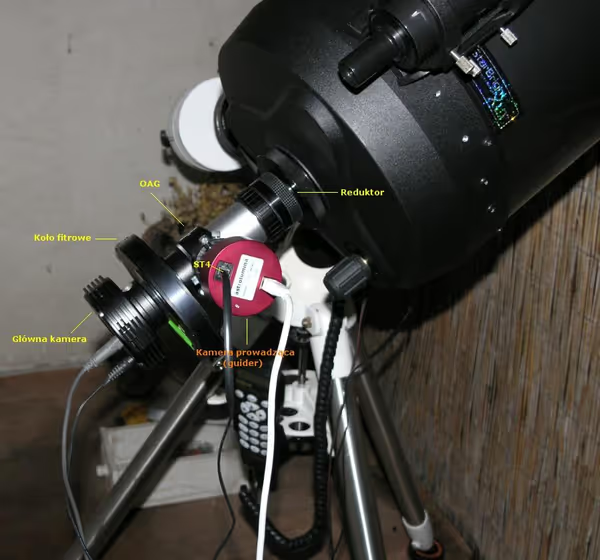
Comment article